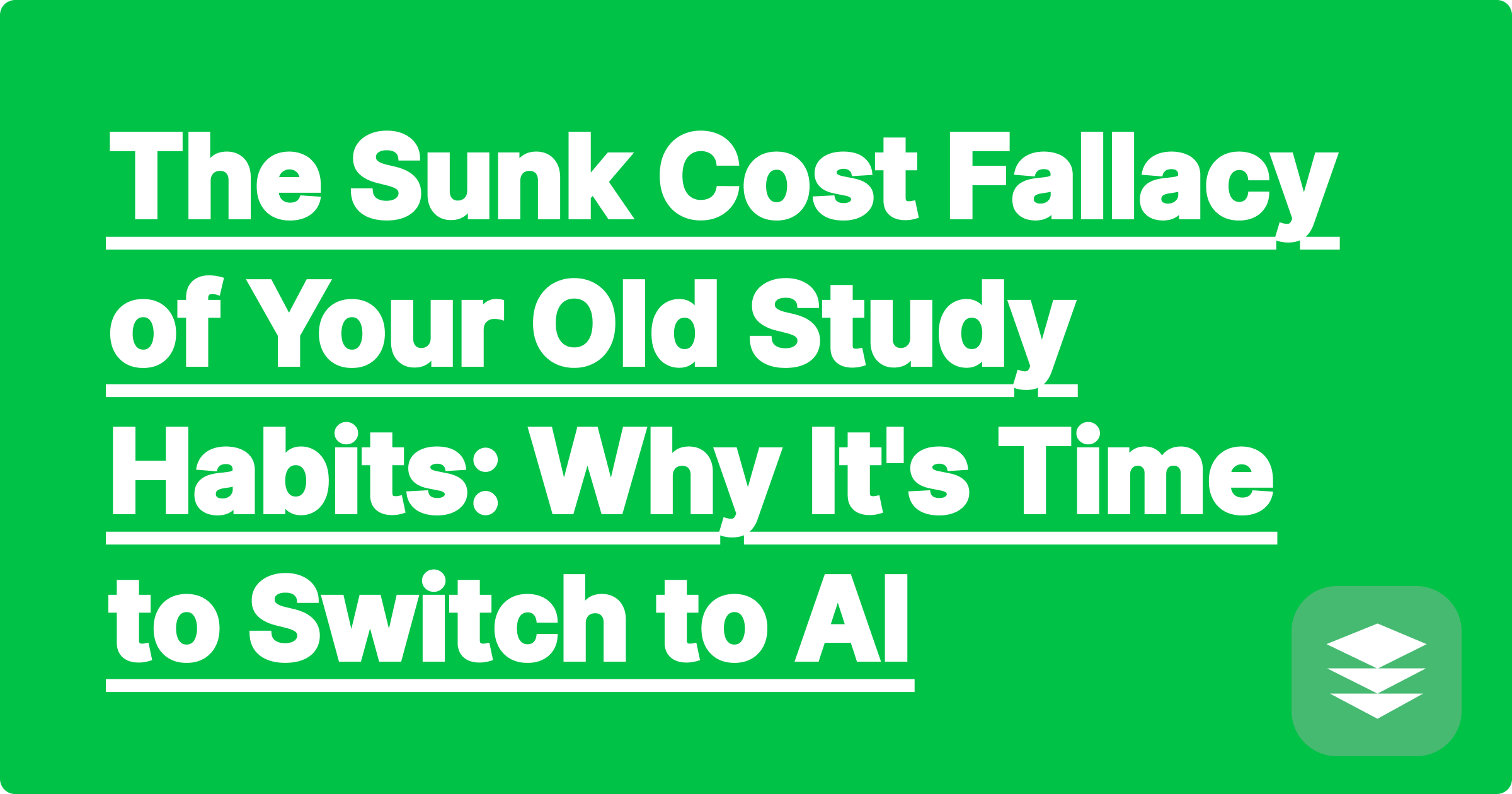
You spend hours meticulously re-writing your lecture notes by hand. You know it's slow. You know it's tedious. You suspect there might be a faster way, but a powerful thought keeps you stuck: "I've spent years developing this system. I can't just abandon it now." If this sounds familiar, you're not just being stubborn; you're falling victim to a powerful cognitive bias known as the sunk cost fallacy.
The sunk cost fallacy is our tendency to continue with a behavior or endeavor as a result of previously invested resources (like time, money, or effort), even if it's clear that the current costs outweigh the benefits. It's the reason people stay in bad jobs, finish terrible movies, and cling to inefficient study habits. The past investment ("sunk cost") feels too big to "waste," so we continue making a bad investment.
We see many sunk cost fallacy examples in academic life:
The arrival of powerful AI learning tools represents the single best opportunity you have to break free from this fallacy. Changing study habits is hard because the alternative needs to be not just a little better, but dramatically better. AI provides that dramatic improvement.
Consider the "handwritten notes" habit:
[Image: A student looking frustrated, sitting in front of a huge pile of handwritten notebooks. An arrow points to another image of the same student looking relaxed, using a single GPAI Cheatsheet on their laptop. The first image is labeled "Sunk Cost." Alt-text: A visual explaining how changing study habits from manual to AI can overcome the sunk cost fallacy.]
The knowledge you gained through your old, inefficient methods is still in your brain. That's not wasted. Now, you have the opportunity to build on that foundation with a faster, smarter set of tools. You're not abandoning your past work; you're upgrading your future workflow.
A: There can be. The physical act of writing can aid memory. However, the AI workflow proposes a trade: you trade the "slowness" of writing for the "depth" of analysis. You can use the hours saved from transcription to do more practice problems, ask the AI deeper conceptual questions, and test yourself with active recall—activities that science has shown lead to better long-term retention.
A: Use the GPAI Solver as a simple calculator for your next problem set. Just use it to check your final answers. This is a low-friction way to introduce the tool and experience a quick win, making you more open to trying its more advanced features.
Don't let the ghost of past efforts dictate your future success. Recognize the sunk cost fallacy for what it is—an irrational emotional attachment to an inefficient system. By embracing modern AI tools, you can honor your past hard work by building a smarter, faster, and less stressful academic future.
[It's time for an upgrade. Acknowledge your past efforts and try a smarter way to study with the GPAI Suite. Sign up for 100 free credits.]
How to Finally Organize Your Chaotic Google Drive / Dropbox with AI
The Sunk Cost Fallacy of Your Old Study Habits: Why It's Time to Switch to AI
How an AI Notetaker Can Help Students with ADHD Focus
The 'Weekend Warrior' Study Plan: How to Master a Week's Content in 5 Hours
Could you explain that with a sports analogy?': Asking AI for Personalized Metaphors
The Quantified Student: Using AI to Track Your Study Metrics and Find Your Peak Time
How to Reverse-Engineer an 'A+' Paper with an AI Assistant
The 'Empty Your Brain' Technique: Using an AI Notetaker Before Bed for Better Sleep
Using AI to Create 'Ancestor' Cheatsheets: Linking Current Topics to Prerequisites
What's Next for GPAI? A Sneak Peek into Our Vision for the Future of Learning